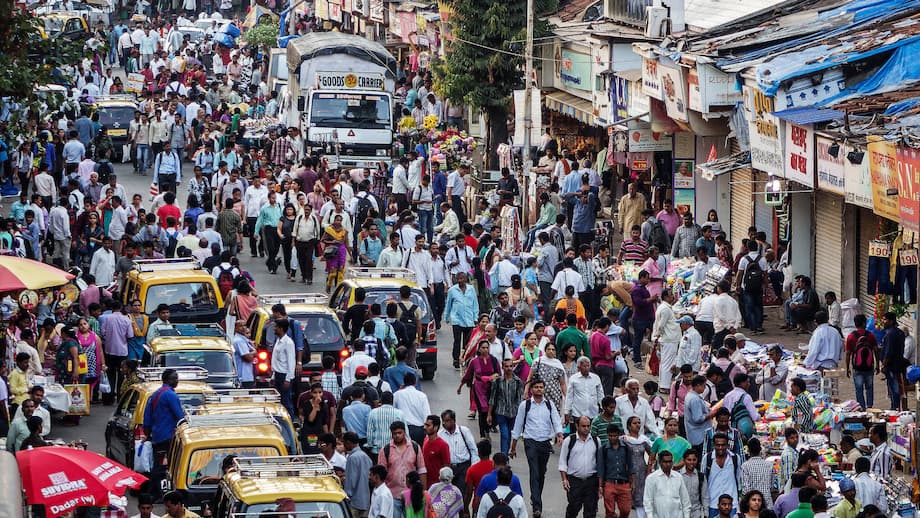India Surpasses 200 Million Diabetes Cases: How Genetics, Diet, and Urbanization Drove a Public Health Crisis
India now accounts for a quarter of global diabetes cases, with experts warning that lifestyle changes, genetic factors, and rapid urbanization have fueled an unprecedented epidemic.
India has become the epicenter of a global diabetes crisis. As of 2023, an estimated 212 million Indians are living with diabetes, according to a major study published in The Lancet. This staggering figure means India now accounts for roughly one in four diabetes cases worldwide, surpassing both China and the United States combined. The epidemic is not confined to any one region or demographic—diabetes is now a common diagnosis across all ages and socio-economic backgrounds, from bustling cities to rural villages. The speed and scale of the crisis have stunned public health experts, who warn that without urgent action, the disease could undermine India’s development for decades to come.
- India Surpasses 200 Million Diabetes Cases: How Genetics, Diet, and Urbanization Drove a Public Health Crisis
- How Did Diabetes Become So Widespread in India?
- Dietary Changes: From Whole Grains to Processed Foods
- Other Risk Factors: Smoking, Stress, and Environmental Influences
- Complications: The Human and Economic Cost
- Why So Many Cases Remain Undiagnosed
- What Is Being Done? Policy Responses and Prevention Efforts
- What Can Individuals Do to Reduce Their Risk?
- Key Points
How Did Diabetes Become So Widespread in India?
Diabetes, particularly type 2, has long been associated with affluence and sedentary lifestyles. However, in India, the disease has exploded across all segments of society. The number of people living with diabetes has increased eightfold since 1990. According to the Indian Council of Medical Research (ICMR), more than 100 million Indians have diabetes, and another 136 million are estimated to have pre-diabetes—a condition that often progresses to full-blown diabetes within five years.
Type 2 diabetes, which accounts for 95% of cases, develops when the body cannot produce enough insulin or becomes resistant to it. This leads to persistently high blood sugar, which over time damages blood vessels and nerves. The consequences are severe: diabetes shortens life expectancy by an average of seven years and is a leading cause of blindness, amputations, kidney failure, heart disease, and stroke in India. Alarmingly, complications are now appearing in younger age groups, including teenagers and children.
Genetic Susceptibility: Why Are South Asians at Higher Risk?
One of the most significant drivers of India’s diabetes epidemic is genetic predisposition. People of South Asian descent are four to six times more likely to develop diabetes than other ethnicities, and they often become diabetic at lower body weights. This heightened risk is partly due to the way South Asians store fat—more around the abdomen (visceral fat), which wraps around organs like the liver and pancreas. Visceral fat is particularly dangerous because it increases insulin resistance, making blood sugar harder to control.
According to the National Family Health Survey, about 40% of Indian women and 12% of men have abdominal obesity. This means that even individuals who appear slim by Western standards may be at high risk. Scientists have not identified a single gene responsible, but many believe the roots lie in India’s history of frequent famines and undernutrition. Over generations, the population may have adapted to store fat more efficiently—a survival advantage during scarcity, but a liability in today’s era of abundance.
Evolutionary and Early Life Factors
Research published in Frontiers in Public Health suggests that low birth weights, short stature, and low lean muscle mass—common in Indian populations due to historical ecological stresses—have reduced metabolic capacity. This makes Indians more susceptible to the metabolic consequences of modern lifestyles, such as obesity and diabetes, even at lower body mass indexes (BMIs). The intergenerational effects of undernutrition, as seen in historical famines, may also play a role through epigenetic changes that increase diabetes risk.
Dietary Changes: From Whole Grains to Processed Foods
While genetics set the stage, it is lifestyle and environmental changes that have “pulled the trigger” on India’s diabetes epidemic. Traditional Indian diets, once rich in whole grains, legumes, and vegetables, have shifted dramatically over the past few decades. The Green Revolution and subsequent government policies promoted the cultivation and consumption of high-yield, refined grains like white rice and wheat, replacing traditional staples such as millet and barley. These refined carbohydrates have a higher glycemic index, causing rapid spikes in blood sugar and increasing diabetes risk.
According to the World Health Organization, sales of ultra-processed foods in India have grown by 13% annually since 2011. Fast food chains and multinational brands have flooded the market, making sugary drinks, fried snacks, and processed foods widely available. A recent ICMR study found that foods high in Advanced Glycation End Products (AGEs)—such as samosas, chips, cakes, and fried foods—are major contributors to the diabetes crisis. AGEs are harmful compounds formed during high-heat cooking and food processing, which promote inflammation, oxidative stress, and insulin resistance.
The ICMR clinical trial demonstrated that participants who switched to a low-AGE diet (rich in fruits, vegetables, whole grains, and foods prepared by boiling or steaming) showed improved insulin sensitivity and lower blood sugar levels. Conversely, those consuming high-AGE diets experienced increased inflammation and higher diabetes risk. The findings underscore the importance of both food choices and cooking methods in managing diabetes risk.
Urbanization and Sedentary Lifestyles
India’s rapid urbanization has further accelerated the diabetes epidemic. In the 1960s, only 18% of Indians lived in cities; today, that figure is 35%, and it is projected to reach 40% by 2030. Urban environments often mean less physical activity, more sedentary jobs, and greater access to processed foods. Studies consistently show that diabetes prevalence is higher in urban areas (14.9%) compared to rural regions (9.5%).
Economic growth and rising incomes have also contributed to lifestyle changes. More Indians are eating out, consuming convenience foods, and spending less time on physical labor. The shift is particularly pronounced among the burgeoning middle class, but even rural populations are adopting similar habits as processed foods become more accessible.
Other Risk Factors: Smoking, Stress, and Environmental Influences
While diet and inactivity are major contributors, other factors are also at play. Smoking, for example, increases diabetes risk by 30-40%, according to the World Health Organization. Nicotine impairs insulin production and promotes insulin resistance, compounding the risk for smokers. Chronic stress, air pollution, and exposure to environmental toxins have also been linked to higher diabetes rates.
Gestational diabetes (diabetes during pregnancy) is another growing concern. Women who develop gestational diabetes are at higher risk of developing type 2 diabetes later in life, and their children are also more susceptible. Managing gestational diabetes and promoting healthy pregnancies are crucial for breaking the cycle of intergenerational risk.
Regional Trends and Early Onset
The diabetes epidemic is not uniform across India. States like Goa, Puducherry, and Kerala report the highest prevalence, but previously low-prevalence states such as Uttar Pradesh and Bihar are now seeing sharp increases. In Karnataka, for example, 12% of adults are diabetic, with cases increasingly diagnosed in people as young as 25. The trend toward earlier onset is particularly worrying, as it means more years of living with the disease and a greater risk of complications.
Complications: The Human and Economic Cost
The consequences of India’s diabetes epidemic are profound. Persistently high blood sugar damages blood vessels and nerves, leading to a host of complications:
- Blindness: Diabetic retinopathy, caused by damage to the blood vessels in the retina, is a leading cause of vision loss. A 2022 study found that 12.5% of Indian diabetics show signs of diabetic eye disease.
- Kidney Failure: Diabetes is a major cause of chronic kidney disease and dialysis.
- Amputations: Poor circulation and nerve damage can lead to foot ulcers and infections, sometimes requiring amputation. These are increasingly seen in younger patients.
- Heart Disease and Stroke: Diabetes significantly raises the risk of cardiovascular complications.
On average, diabetes kills around 1.6 million Indians each year. The economic burden is immense, with billions spent on healthcare, lost productivity, and long-term disability. The World Economic Forum estimates that global health expenditure on diabetes could reach $1 trillion by 2045, with developing countries like India bearing the greatest burden.
Why So Many Cases Remain Undiagnosed
One of the most alarming aspects of India’s diabetes crisis is the high rate of undiagnosed cases. The latest data suggest that nearly 57% of Indians with diabetes are unaware of their condition. Many people do not seek medical care until complications arise, by which time the disease has often caused irreversible damage. The lack of routine screening, especially in rural areas, and limited access to affordable healthcare and diagnostic tools are major barriers.
Dr. RM Anjana, lead author of the landmark Lancet study, explained the urgency:
“Pre-diabetes often converts to diabetes very quickly in the Indian population, with more than 60% converting within five years.”
This rapid progression underscores the need for early detection and intervention.
What Is Being Done? Policy Responses and Prevention Efforts
The Indian government has launched several initiatives to combat the diabetes epidemic. These include scaling up screening programs for adults over 30, subsidizing essential medicines and blood sugar monitors, and deploying healthcare teams to rural areas to train staff in diabetes care. The goal is to reach at least 75 million people with or at risk of diabetes by the end of the year.
There is also growing interest in policy measures such as taxing sugary drinks and processed foods, similar to successful interventions in countries like Mexico and the UK. Revenue from such taxes could fund public health campaigns and subsidize healthier food options. However, challenges remain, including cultural preferences for sweets and the need to ensure that taxes do not disproportionately impact low-income populations.
Education and awareness campaigns are crucial. Schools and community programs are being encouraged to promote healthy eating, physical activity, and stress management from an early age. Experts emphasize that prevention must start in childhood to curb the rising tide of obesity and diabetes.
The Role of New Treatments
Medical advances offer some hope. The diabetes drug semaglutide (the active ingredient in Ozempic), which improves blood sugar control and promotes weight loss, is expected to become much more affordable in India when it goes off patent. Prices could drop by up to 90%, making the drug accessible to more people. However, experts caution that medication alone will not solve the crisis. As Dr. H Basavanagowdappa, vice-chancellor of JSS Academy of Higher Education & Research, noted:
“The reality is that it’s a multifactorial problem without a quick solution.”
What Can Individuals Do to Reduce Their Risk?
While genetics and early life factors play a role, most diabetes risk factors are modifiable. Experts recommend the following steps:
- Adopt a diet rich in whole grains, fruits, vegetables, and lean proteins. Limit processed, fried, and sugary foods.
- Choose cooking methods like boiling or steaming instead of frying or roasting to reduce AGEs.
- Engage in regular physical activity—at least 150 minutes of moderate exercise per week.
- Avoid tobacco in all forms and limit alcohol consumption.
- Manage stress through mindfulness, yoga, or other relaxation techniques.
- Get regular health check-ups, especially if you have a family history of diabetes or other risk factors.
For those already diagnosed, good control of blood sugar, blood pressure, and cholesterol can prevent or delay complications. Early detection and consistent management are key to living well with diabetes.
Key Points
- India now has over 212 million people living with diabetes, accounting for a quarter of global cases.
- Genetic predisposition, historical undernutrition, and rapid dietary and lifestyle changes have created a “perfect storm” for diabetes in India.
- Processed foods, refined carbohydrates, and high-heat cooking methods are major dietary contributors.
- Urbanization and sedentary lifestyles have accelerated the epidemic, with cases rising fastest in cities and among younger people.
- Complications such as blindness, kidney failure, and amputations are on the rise, with significant human and economic costs.
- More than half of diabetes cases in India remain undiagnosed, highlighting the need for better screening and awareness.
- Government initiatives focus on screening, affordable treatment, and education, but experts stress that prevention through healthy lifestyles is essential.
- Policy measures like sugar taxes and public health campaigns are being considered to curb the epidemic.
- Individuals can reduce their risk by adopting healthier diets, increasing physical activity, and avoiding tobacco.
- There is no quick fix—addressing India’s diabetes crisis will require sustained, multi-sectoral efforts for years to come.












